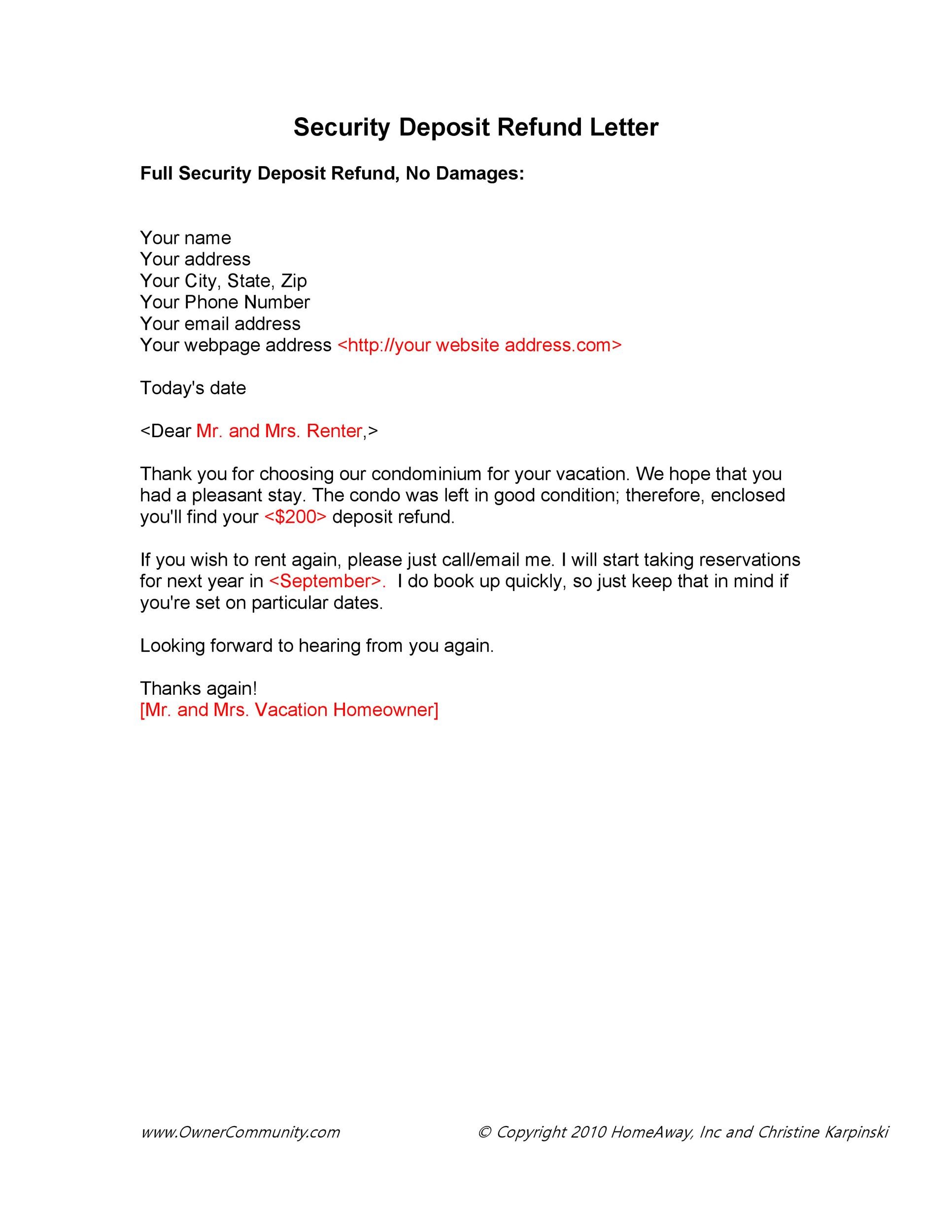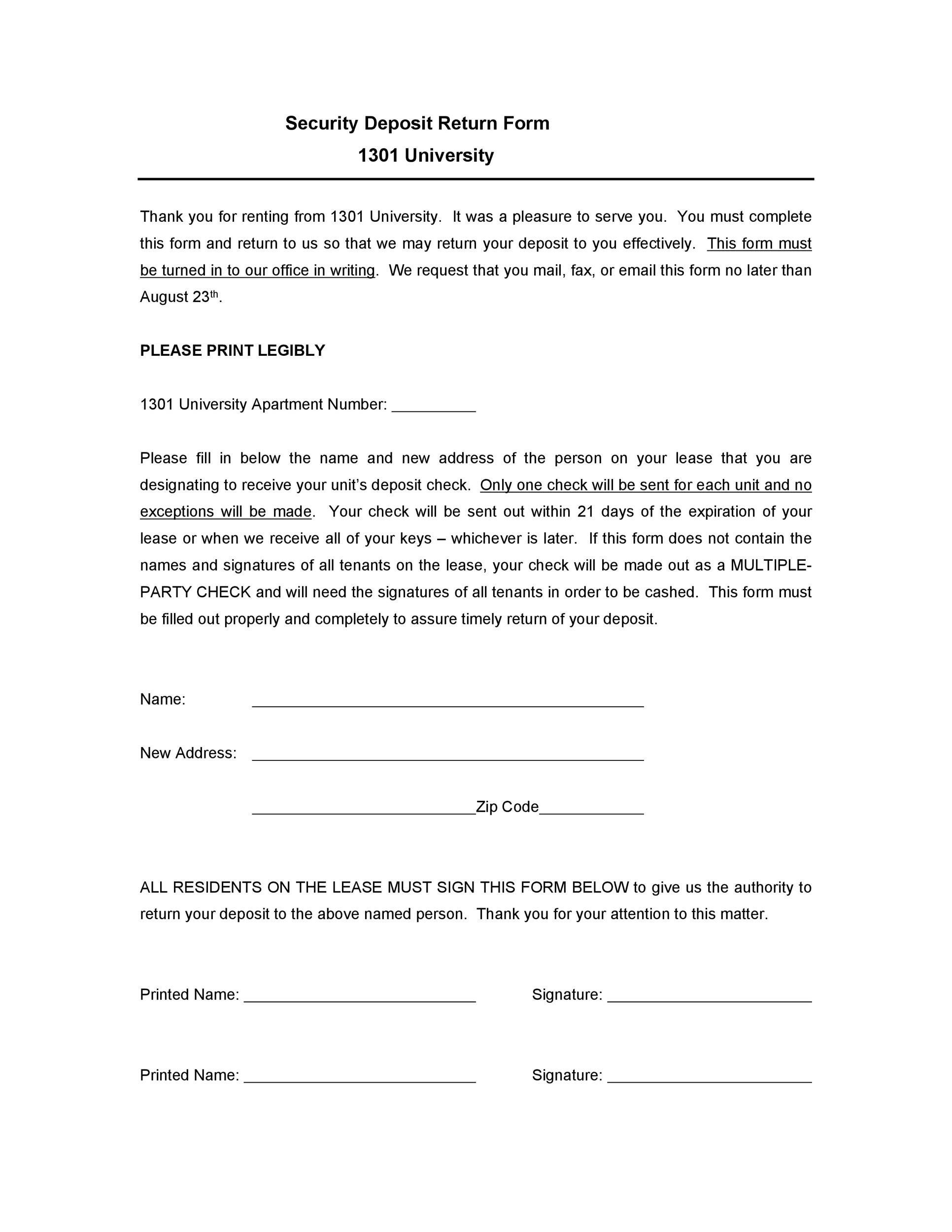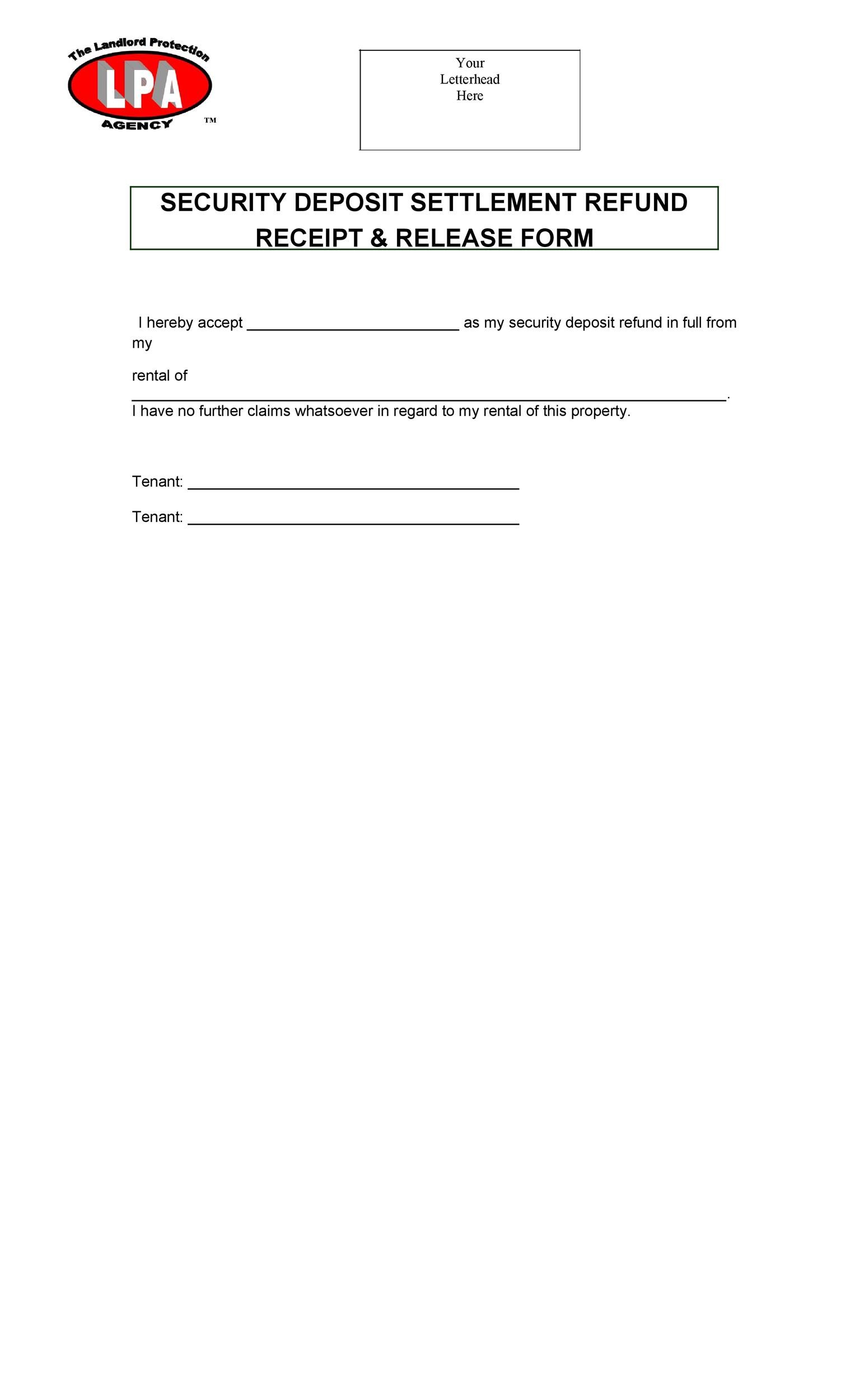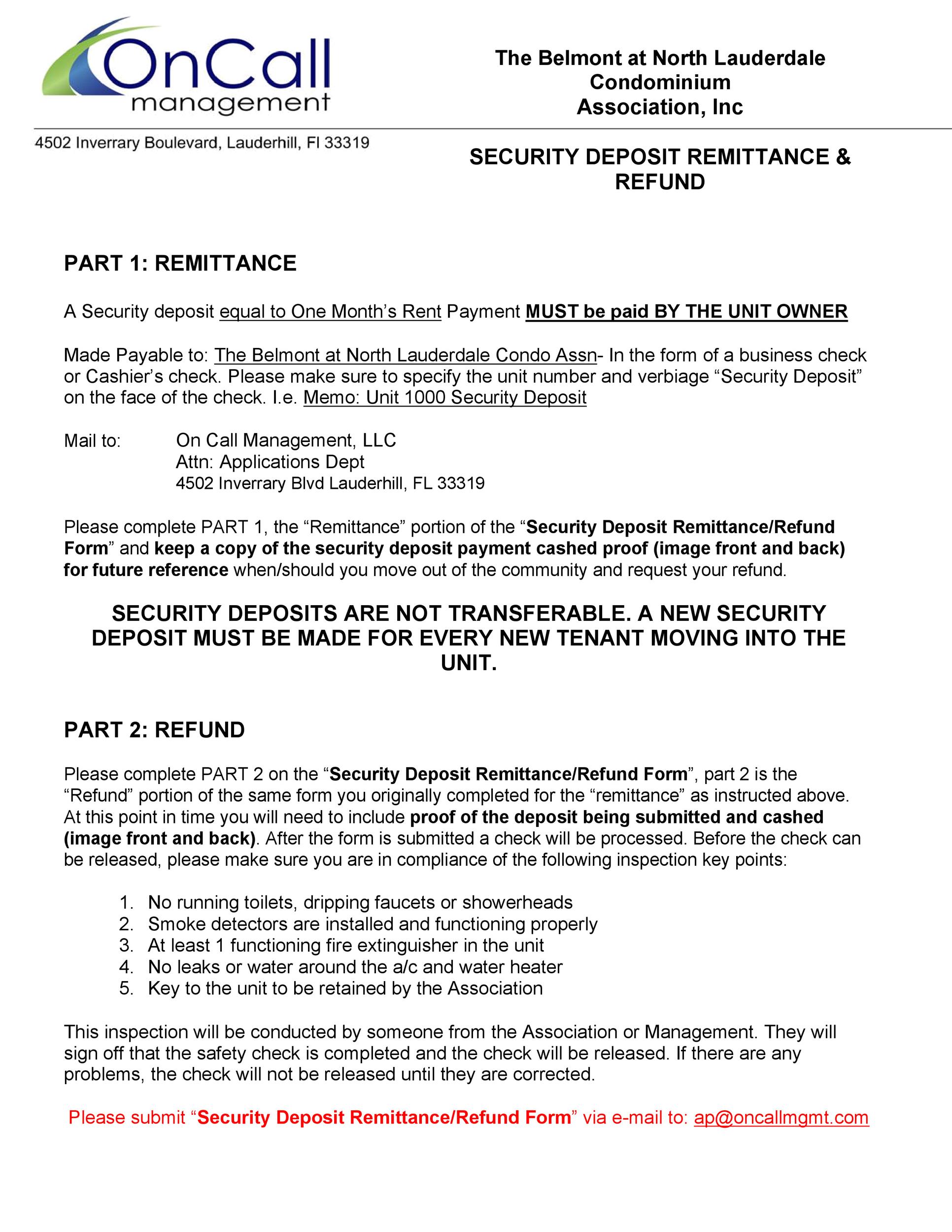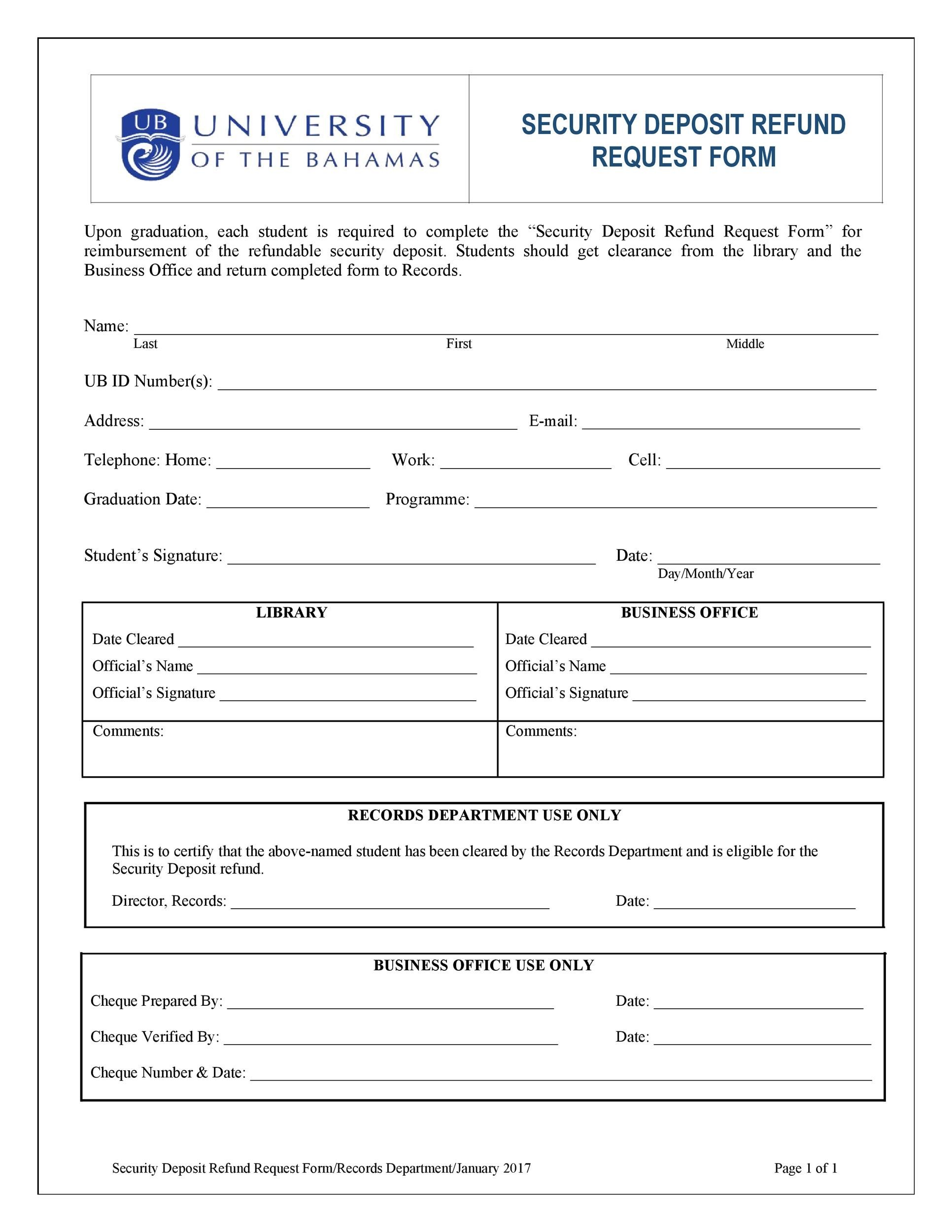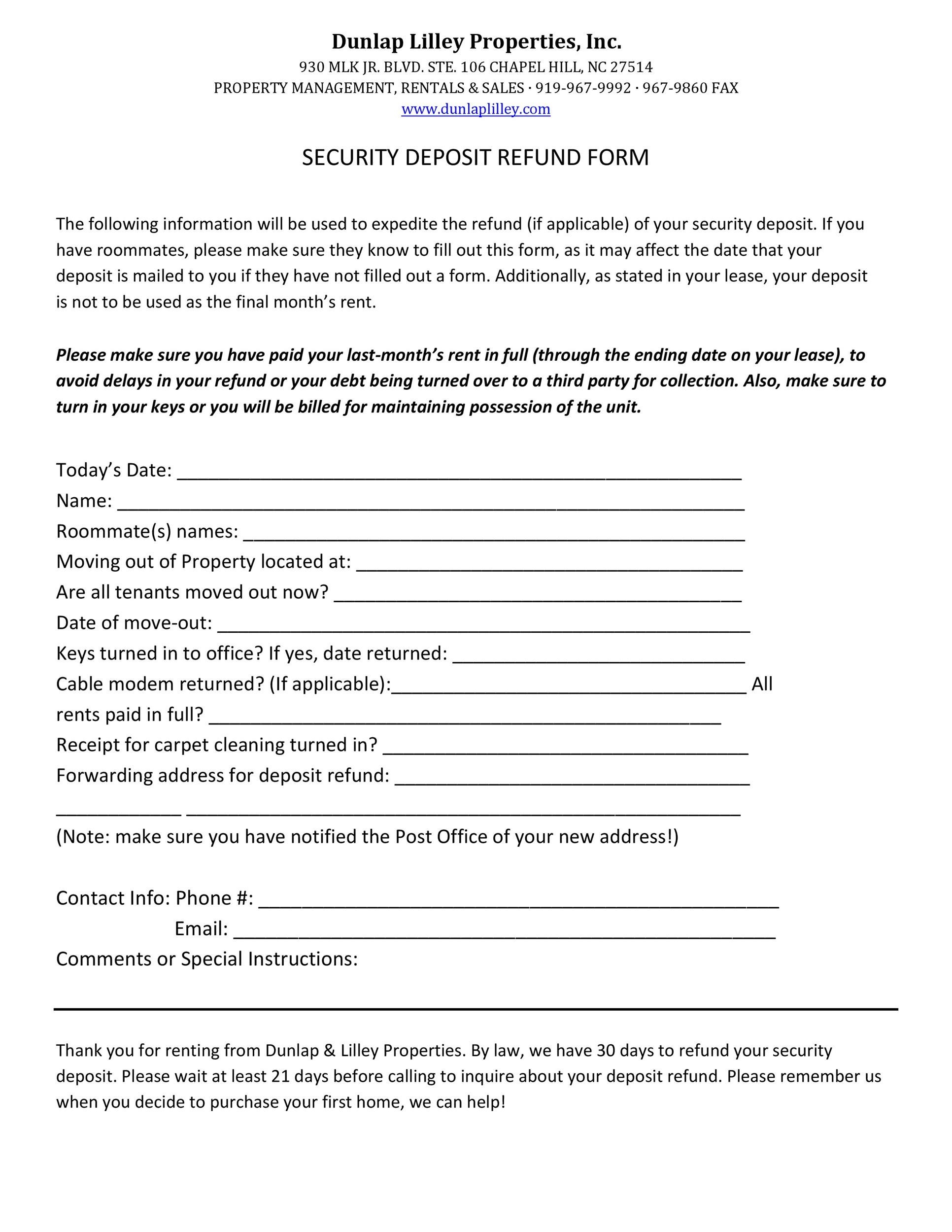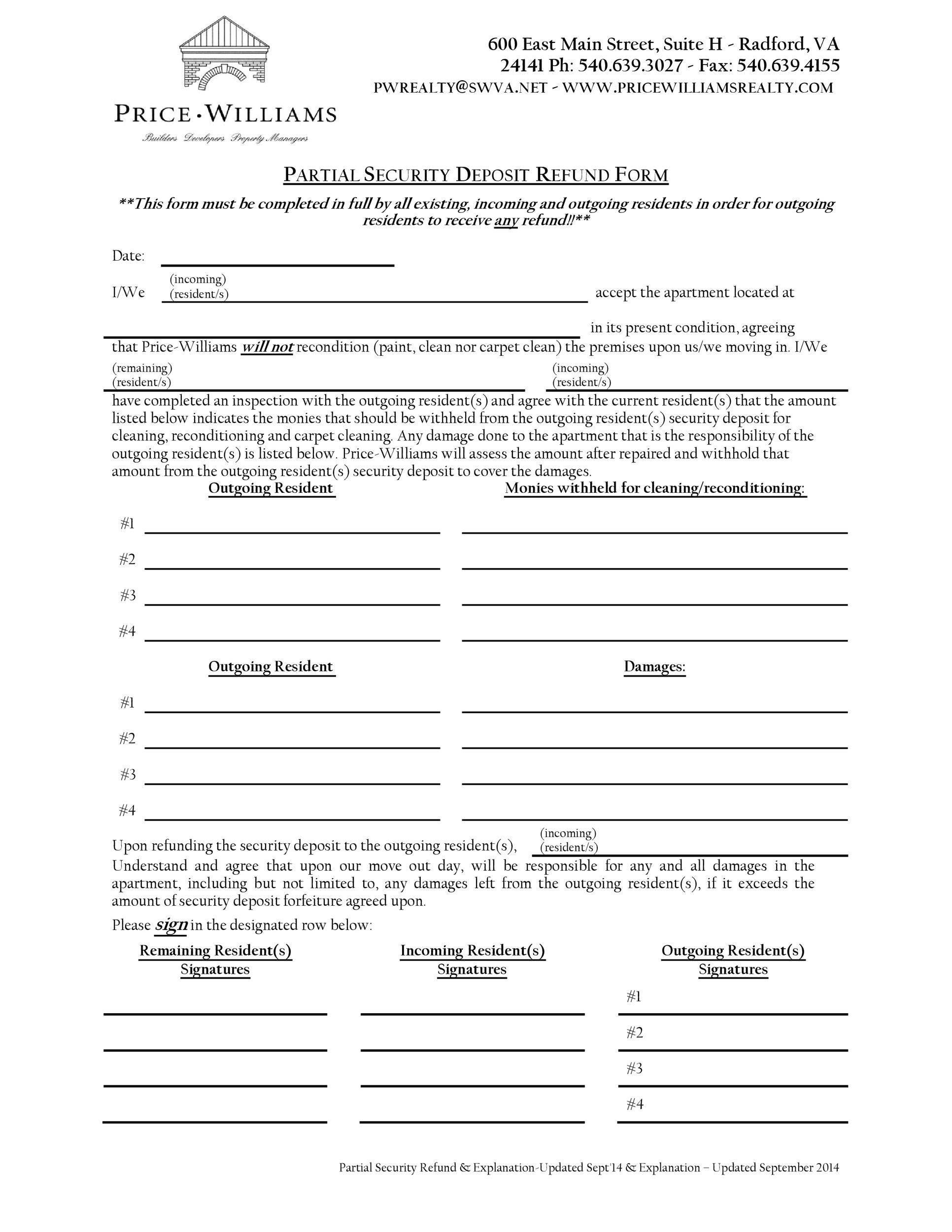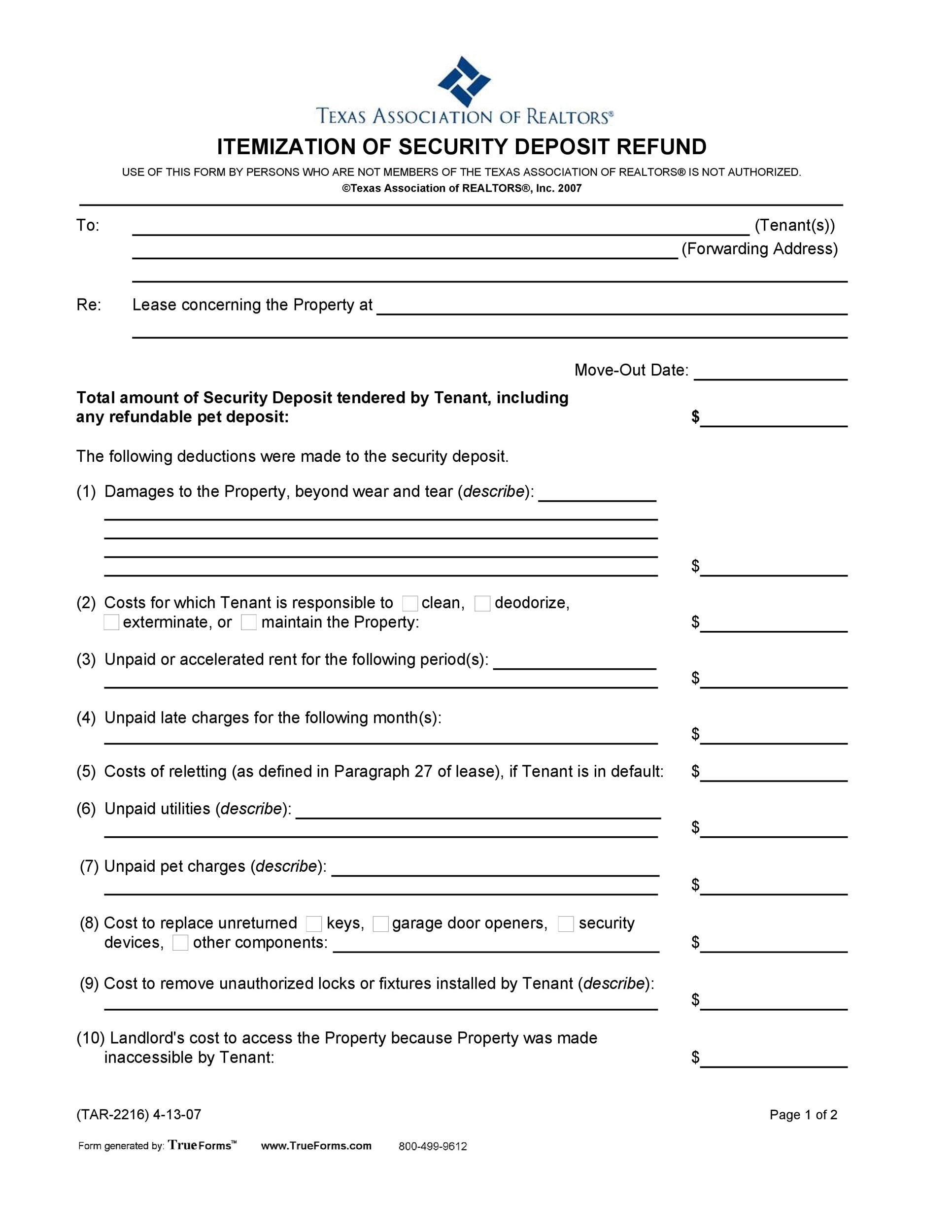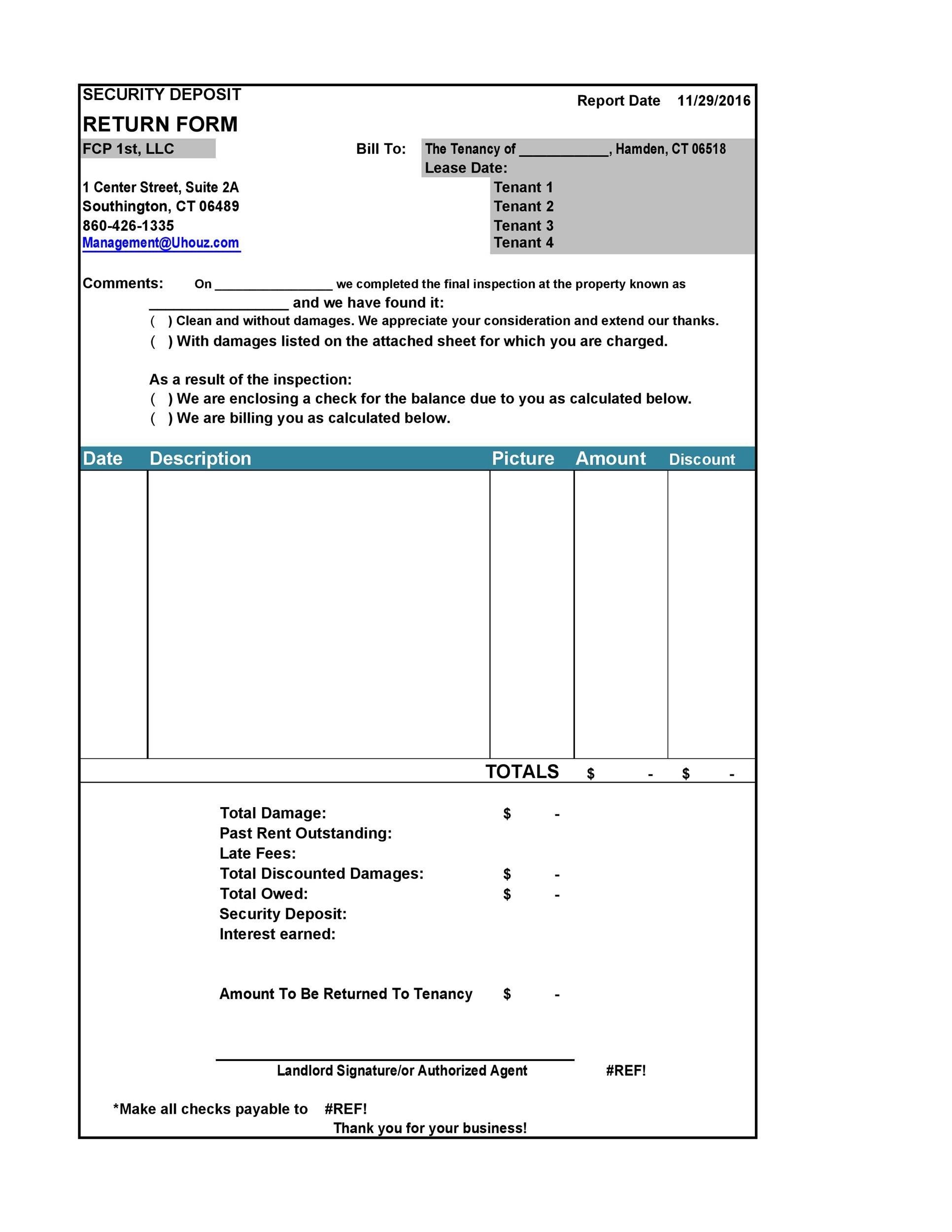It’s common practice that before a tenant occupies a rented apartment, the landlord requests from the tenant a security deposit. This amount gives the landlord the assurance that any damages made in the apartment during the tenant’s tenure get paid for. In case there is little or no damage, the tenant requests the landlord a refund on his security deposit through a security deposit return letter.
Table of Contents
- 1 Security Deposit Return Letters
- 2 When do you need a security deposit return letter?
- 3 Security Deposit Refund Forms
- 4 Writing a security deposit return letter for your tenant
- 5 Security Deposit Return Forms
- 6 Including a financial statement with your security deposit return letter
- 7 Free Security Deposit Return Letters
- 8 Reasons for not returning a tenant’s security deposit
- 9 How to justify your reason for not returning your tenant’s security deposit?
Security Deposit Return Letters
When do you need a security deposit return letter?
Leaving an apartment for a new residence can often time be very hectic as you need to supervise the move. This is where the security deposit return letter can come in handy. You may not have the time to talk to your landlord, so the best way to handle this issue is sending him a letter. Use the security deposit refund form or letter if:
- You’re leaving your apartment and have to inform your former landlord of your new address where he can send the deposit.
- You’re the landlord and you want to have move-out documents available to your tenants.
Before the landlord sends you your return deposit, he will inspect the apartment. At this point, you may have already left the premises and if you didn’t inform him where to send the return deposit, he wouldn’t know where to send it.
Remember that the security deposit is your money. Therefore, you must make sure that you get it. The security deposit return form specifies your new address to will ensure that you get your money back, and quickly.
Security Deposit Refund Forms
Writing a security deposit return letter for your tenant
For a landlord, writing a security deposit return letter should include the financial statement of the tenant during his stay at the apartment. This is the letter’s most important section and must include:
- An introductory paragraph which mentions that returning the deposit is a requirement of law minus the legitimate charges.
- A statement in the letter which contains the financial statement of deductions from the security deposit.
- Specify in detail, the amount of each deduction and a brief explanation for the deduction.
- Copies of cleaning and repair bills if applicable.
- A check for the amount owed to the tenant or a request from the tenant to pay the amount due as soon as possible, including the date by which he must make the payment.
This is a simple transaction between the landlord and the tenant and won’t have to be so meticulously detailed. A simple letter containing the financial statement, the deductions, and the amount of the security deposit given to the tenant will suffice. The landlord can either write this in letter form or as a financial statement.
To ensure that you’re doing it right, check your state laws for compliance with the local requirements. If as a landlord you aren’t sure about how to make the security deposit refund form, you can always hire a professional to prepare the document. Or you can download a template from here and use it as a reference.
Security Deposit Return Forms
Including a financial statement with your security deposit return letter
It’s highly recommended to send your tenant a financial statement about his return request along with the security deposit return form. The statement should contain the following information:
- The name of the tenant and his new address, or the address given for the return of the security deposit.
- The start date and the end date of the lease.
- The amount of the security deposit given by the tenant when he moved in.
- The amount of accrued interest.
- Any legitimate deductions including cleaning costs, unpaid rent, damages, repairs, late fees, unpaid utilities, and other expenses.
- The total amount of deductions.
- The balance due to the tenant or the amount due to the landlord if any.
- The signature of the landlord and the date of signing
- Copies of the bills if any.
Free Security Deposit Return Letters
Reasons for not returning a tenant’s security deposit
As mentioned earlier, it’s a common practice for a new tenant to pay a security deposit before occupying the premises. This money belongs to the tenant and is only held by the landlord. Then it’s returned when the tenant decides to leave or until the end of the lease term.
Every state has its own specific laws regarding security deposit that must be strictly followed by both tenants and landlords. This includes the reasons why the landlord may keep the security deposit of his tenant. These are the instances when the tenant won’t get the security deposit:
- Breaking or terminating a lease before its expiration
Since the tenant broke the lease agreement, the landlord has the right to keep all or only a part of the security deposit to make up for the costs associated with the breach. But the outcome can also depend upon the wordings of the agreement and the tenant-landlord laws of the state.
If an early termination clause was part of the agreement, then the parties have to follow these terms. If either the landlord or the tenant brings the case to the court, the landlord can charge his tenant for the necessary court and lawyer fees. - Non-payment
When tenants don’t pay their rents, the landlord has the right to either keep all or a part of the security deposit as coverage of lost rents. This applies to most states. The act alone is already considered a breach of the agreement, where the tenant cannot fulfill his contractual obligations to pay the monthly rent as stipulated in the lease. - Damages
One of the main reasons why landlords require security deposits is for the payment of damages to the apartment during the tenant’s tenure. But you have to correctly distinguish damages to the normal wear and tear. Here are samples for each instance:
Wear and tear
small or few nail holes in the walls
small or few carpet stains
a small amount of mildew which formed in the shower tiles
grout
tarnish on the bathroom fixtures
loose doors or handles
a reasonable amount of dust, grime or dirt on the walls, appliances or floors
Damage:
several or big holes in the walls
several or big carpet holes or stains
extensive water damage
missing covers of outlets
damaged or missing carbon monoxide or smoke detectors
cracked countertops
broken doors, windows or appliances
not returning the keys at the end of tenancy - Cleaning
Generally, the landlord won’t charge the tenant extra cost for cleaning the apartment when the latter leaves. Normal cleaning isn’t a reason for deductions. However, if the cleaning the apartment needs excessive cleaning, then the landlord may keep a part of the security deposit for this.
For instance, you can have a tenant who leaves a bag of trash when he vacates the premises. This is normal and there won’t be any deductions on his security deposit. But if the tenant leaves plenty of trash, spoiled food in cupboards or in the refrigerator, and a lot of other items within the property, the landlord has the right to keep a part of the deposit to cover his cleaning bills.
A second example concerns pets in the apartment. If the tenant’s animal has frequently defecated on the carpet throughout the tenure, the landlord can charge the tenant for the cost of having the carpet cleaned or replace it if necessary. - Utilities
The landlord may also keep the tenant’s security deposit if the latter has not paid his service utilities. This will cover the non-payment of utilities that the tenant neglected to settle which were part of his responsibilities as stated on the lease.
How to justify your reason for not returning your tenant’s security deposit?
Charging the tenant for a security deposit is common in all states before the new tenant moves into a leased apartment. In some states, the landlord must deposit this amount in a separate interest-bearing account, although not all these states require the landlord to return the interest accrued with the deposit.
When the tenant leaves the apartment, many states give the landlord between 30 – 45 days to return the security deposit. Some, however, require that the deposit gets returned between 14 – 15 days after the tenant left the apartment. Even without the number of days, the landlord has an obligation to return the security deposit.
The returned security deposit comes with a security deposit return letter detailing how much the landlord will give back and how much deductions, if applicable, he made from the original amount. Providing a financial statement is the recommended way of settling the return, where the landlord can show in a more detailed manner the same information.
In rare occasions, the landlord will return the entire security deposit. This applies to really good and clean tenants. Most of the time, however, the landlord makes deductions and the tenant only receives a part of the deposit. In the worst cases, the tenant may even owe the landlord money.
The landlord must give justifications for any deductions made. Otherwise, the tenant can sue in a small claims court. If the landlord can justify that the tenant warrants such deductions from the original deposit, then the former need not return the full amount.

